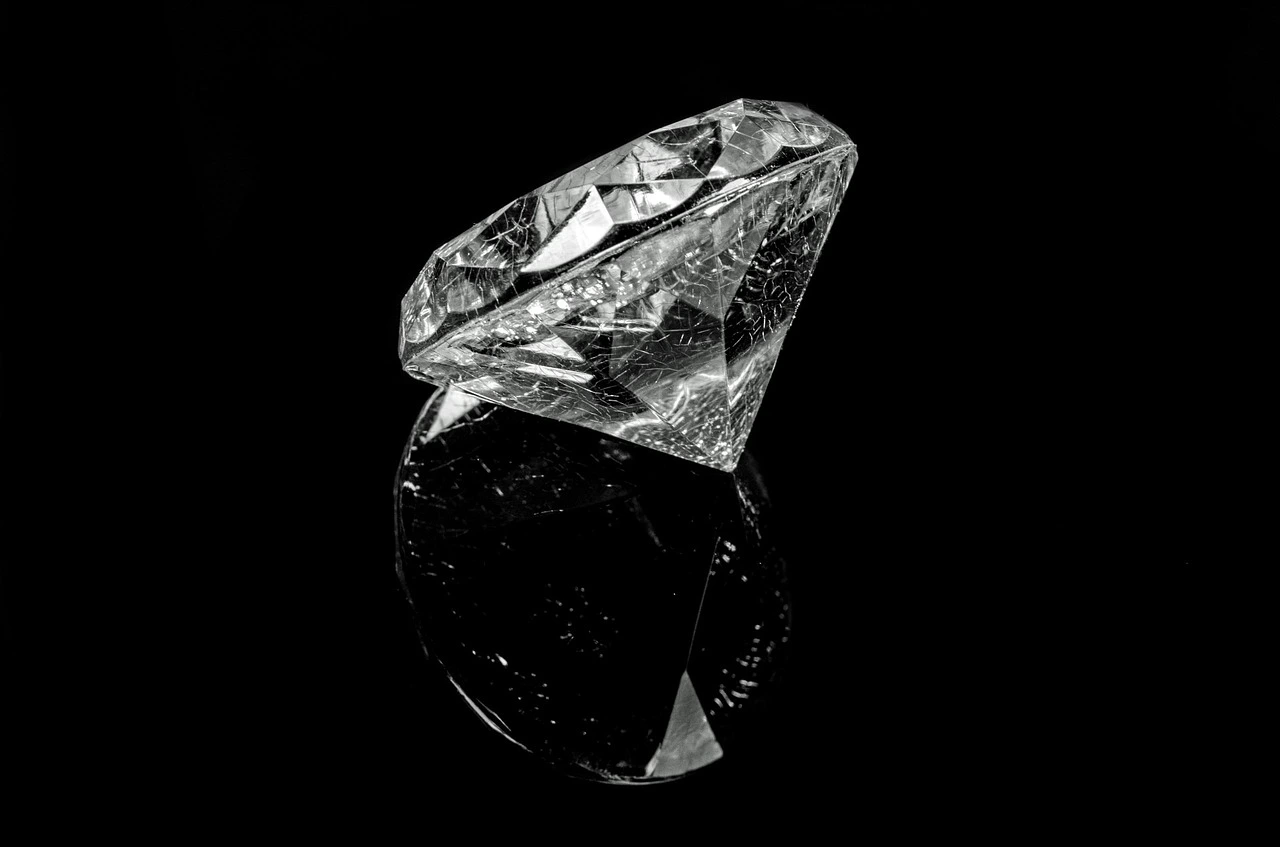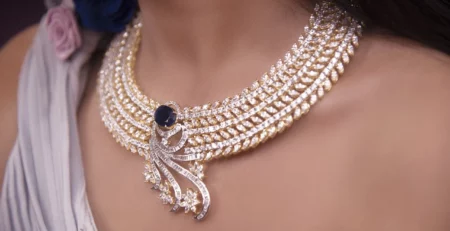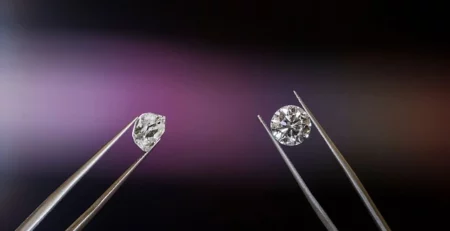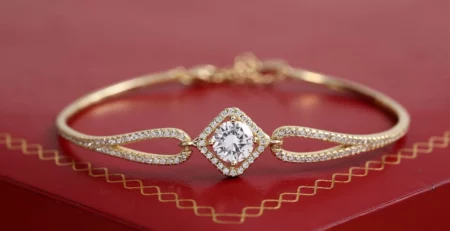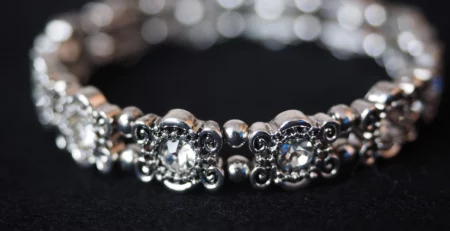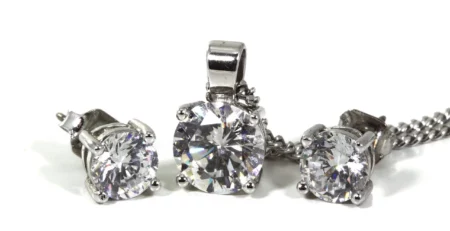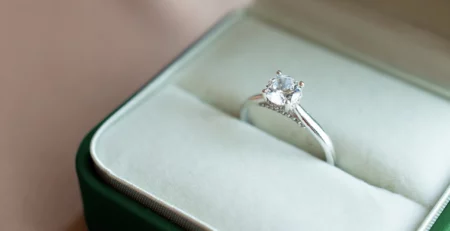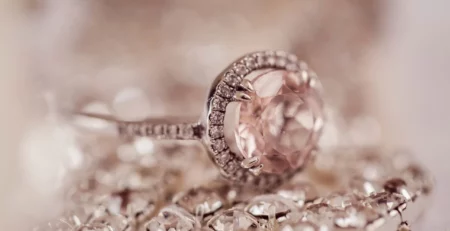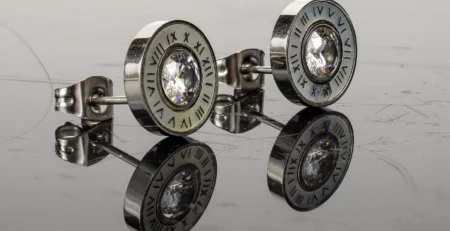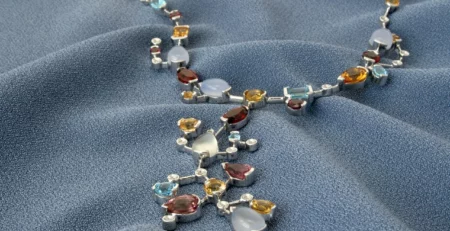Exploring The World Of Diamond Jewelry – Everything About Diamonds
Diamonds have long been celebrated as the epitome of elegance and sophistication. Their dazzling brilliance, timeless allure, and enduring value have made them the ultimate symbol of luxury and romance. Diamond jewelry, in particular, has held a special place in the hearts of both royalty and commoners alike, transcending cultures and generations. Explore the enchanting world of diamond jewellery, from its history and craftsmanship to its modern trends and significance in our lives.
The Rich History of Diamond Jewelry
The story of diamond jewellery dates back thousands of years. The first recorded diamond engagement ring was given in 1477 when the Archduke Maximilian of Austria proposed to Mary of Burgundy with a diamond ring. Since then, diamonds have been associated with love and commitment, becoming an integral part of engagement and wedding traditions worldwide.
The Art of Diamond Cutting and Crafting
One of the most remarkable aspects of diamond jewellery is the artistry that goes into cutting and crafting these precious gems. Skilled artisans carefully shape diamonds into various cuts, each designed to maximize its brilliance and fire. Popular diamond cuts include the round brilliant, princess, emerald, and pear, each offering a unique play of light and enhancing the jewellery’s overall aesthetic.
Types of Diamond Jewelry
Diamonds can be incorporated into a wide range of jewellery pieces, each with its own charm and significance. Here are some popular types of diamond jewellery:
- Engagement Rings: Perhaps the most iconic use of diamonds, engagement rings symbolize love, commitment, and the promise of a lifetime together. Vintage styles, halo settings, and colored diamonds are some of the trending choices in engagement rings.
- Wedding Bands: Wedding bands with diamonds offer a touch of elegance and can complement the engagement ring beautifully. Many couples choose matching diamond-studded bands to symbolize their union.
- Necklaces and Pendants: Diamond necklaces and pendants add a touch of glamour to any outfit. Solitaire pendants, heart-shaped diamonds, and timeless tennis necklaces are popular options.
- Earrings: Diamond earrings come in various styles, from classic studs to extravagant chandelier earrings. They can elevate any look and add a touch of luxury to special occasions.
- Bracelets and Bangles: Diamond-studded bracelets and bangles are versatile accessories that can be worn daily or on formal occasions. Tennis bracelets and bangle sets are timeless choices.
The Four Cs of Diamonds
Understanding the quality of a diamond is essential when choosing diamond jewellery. The Four Cs—cut, carat weight, color, and clarity—determine a diamond’s overall quality and value. Buyers often seek a balance between these factors to find the perfect diamond for their jewellery.
- Cut: The cut of a diamond influences its brilliance and sparkle. A well-cut diamond will reflect light beautifully, creating that signature diamond sparkle.
- Carat Weight: Carat weight refers to the size of the diamond. Larger diamonds are rarer and often more valuable, but the overall beauty of a diamond depends on other factors as well.
- Color: Diamonds come in various colors, with the most valuable being colorless. The Gemological Institute of America (GIA) grades diamonds on a color scale from D (colorless) to Z (light yellow or brown).
- Clarity: Clarity assesses the presence of internal or external imperfections, known as inclusions and blemishes. Diamonds with fewer imperfections are considered more valuable.
Diamond Alternatives and Ethical Considerations
As the demand for diamond jewellery continues to grow, ethical concerns about the diamond industry have come to the forefront. Many consumers now seek alternative options such as lab-grown diamonds or other gemstones like moissanite. These ethical choices offer beautiful, sustainable alternatives without the ethical dilemmas associated with some traditional diamond mining practices.
Symbolism and Traditions
Diamond jewellery often carries deep emotional significance. Diamonds, beyond symbolizing eternal love in engagement and wedding rings, are also associated with achievement and success. Many people celebrate milestones and accomplishments by gifting themselves or loved ones with diamond jewellery, making it a cherished tradition.
Modern Trends in Diamond Jewelry
Diamond jewelry is far from static; it evolves with changing tastes and fashion trends. Here are some modern trends in diamond jewelry:
- Unique and Custom Designs: Custom-designed diamond jewelry allows individuals to express their personal style. Many people now opt for bespoke pieces that reflect their individuality.
- Colored Diamonds: Colored diamonds, including pink, blue, and yellow, are gaining popularity. They add a vibrant and unique touch to traditional diamond jewelry.
- Mixed Metals: Combining different metals like white gold, yellow gold, and rose gold in a single piece of jewelry is a contemporary trend that creates contrast and visual interest.
- Minimalist and Vintage Styles: Minimalist designs and vintage-inspired jewellery are on the rise. Styles like these offer a timeless appeal, suitable for everyday wear.
Also Read- Top Modern Diamond Necklace Designs
Caring for Diamond Jewelry
To ensure that your diamond jewelry remains as stunning as the day you received it, it’s essential to care for it properly. Here are some tips for maintaining the beauty of your diamonds:
Regular Cleaning: Clean your diamond jewellery at home with a soft brush, mild detergent, and warm water. Nevertheless, you can have them professionally cleaned.
Safe Storage: Store your diamond jewellery in separate compartments or soft pouches to prevent scratches as well as damage.
Professional Inspections: Periodically, have a professional jeweler inspect your pieces to ensure the settings are secure and there are no loose stones.
Beyond their monetary value, diamond jewellery often carries sentimental value. People give them as tokens of love, passing them down through generations, creating a tangible connection between family members. The emotional attachment to diamond jewellery is nonetheless a testament to their enduring significance in our lives.
Interesting Facts and Figures
- The Largest Diamond: The largest diamond ever discovered is the Cullinan Diamond, found in South Africa in 1905. It weighed a staggering 3,106 carats (1.37 pounds) in its rough form.
- The Koh-i-Noor Diamond: This famous diamond has a storied history. Originally from India, someone gifted it to Queen Victoria in 1849, and it is now part of the British Crown Jewels. It’s name means “Mountain of Light” in Persian.
- Rumored to be cursed, the Hope Diamond, known for its deep blue color, had brought misfortune to its owners, leading to tragic events.
- The Tiffany Yellow Diamond: This 128.54-carat yellow diamond is one of the largest and most famous yellow diamonds in the world. Audrey Hepburn wore it in publicity photos for the film “Breakfast at Tiffany’s.”
- Diamonds in Space: In 2004, astronomers discovered a white dwarf star named BPM 37093, also known as “Lucy,” which is essentially a diamond of ten billion trillion trillion carats. It’s located 50 light-years away from Earth.
- The Argyle Mine: The Argyle mine in Australia was the world’s primary source of pink diamonds. However, the mine ceased operations in 2020, making pink diamonds even rarer and more valuable.
Key Takeaways
- Timeless Elegance: Celebrated for its enduring elegance and beauty, diamond jewelry has a rich history dating back centuries.
- Craftsmanship Matters: Skilled artisans carefully cut and craft diamonds to maximize their brilliance and fire, furthermore creating stunning jewelry pieces.
- Types of Diamond Jewelry: There are various types of diamond jewelry, including engagement rings, wedding bands, necklaces, earrings, bracelets, and more, each with its own charm and significance.
- The Four Cs: Understanding the Four Cs (cut, carat weight, color, and clarity) is essential when choosing diamond jewellery for quality and value.
- Ethical Considerations: Consumers are increasingly considering ethical alternatives such as lab-grown diamonds and other gemstones due to concerns about traditional diamond mining practices.
FAQs
Are lab-grown diamonds a sustainable and ethical choice for diamond jewellery?
Lab-grown diamonds are a sustainable and ethical alternative to mined diamonds. They are created in controlled environments using advanced technology, reducing the environmental impact associated with traditional diamond mining.
What factors should I consider when choosing an engagement ring with a diamond?
When selecting an engagement ring with a diamond, it’s crucial to consider the Four Cs: cut, carat weight, color, and clarity. These factors determine the diamond’s overall quality and value.
How can I ensure the authenticity and quality of the diamond jewellery I purchase?
To ensure the authenticity and quality of diamond jewellery, look for reputable jewellers who provide certification for their diamonds. GIA (Gemological Institute of America) and other recognized gemological laboratories issue certificates that detail a diamond’s characteristics.

